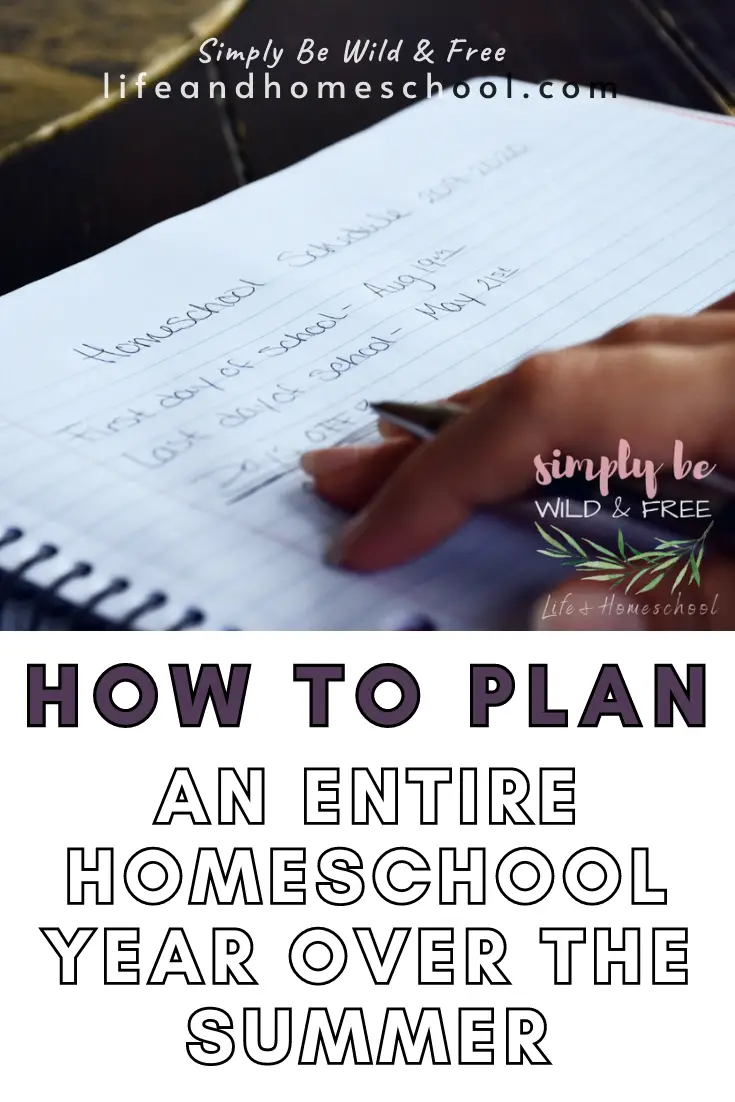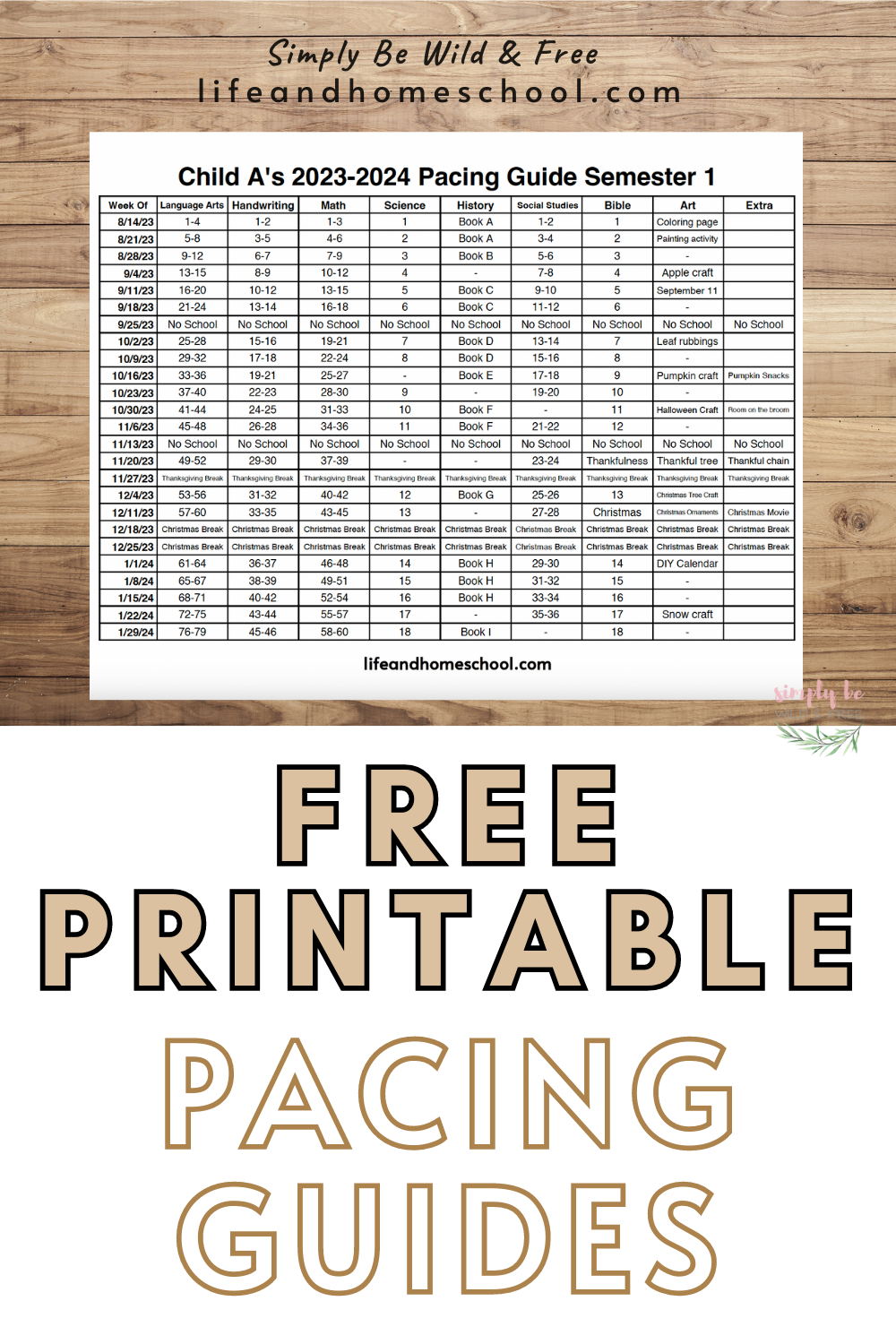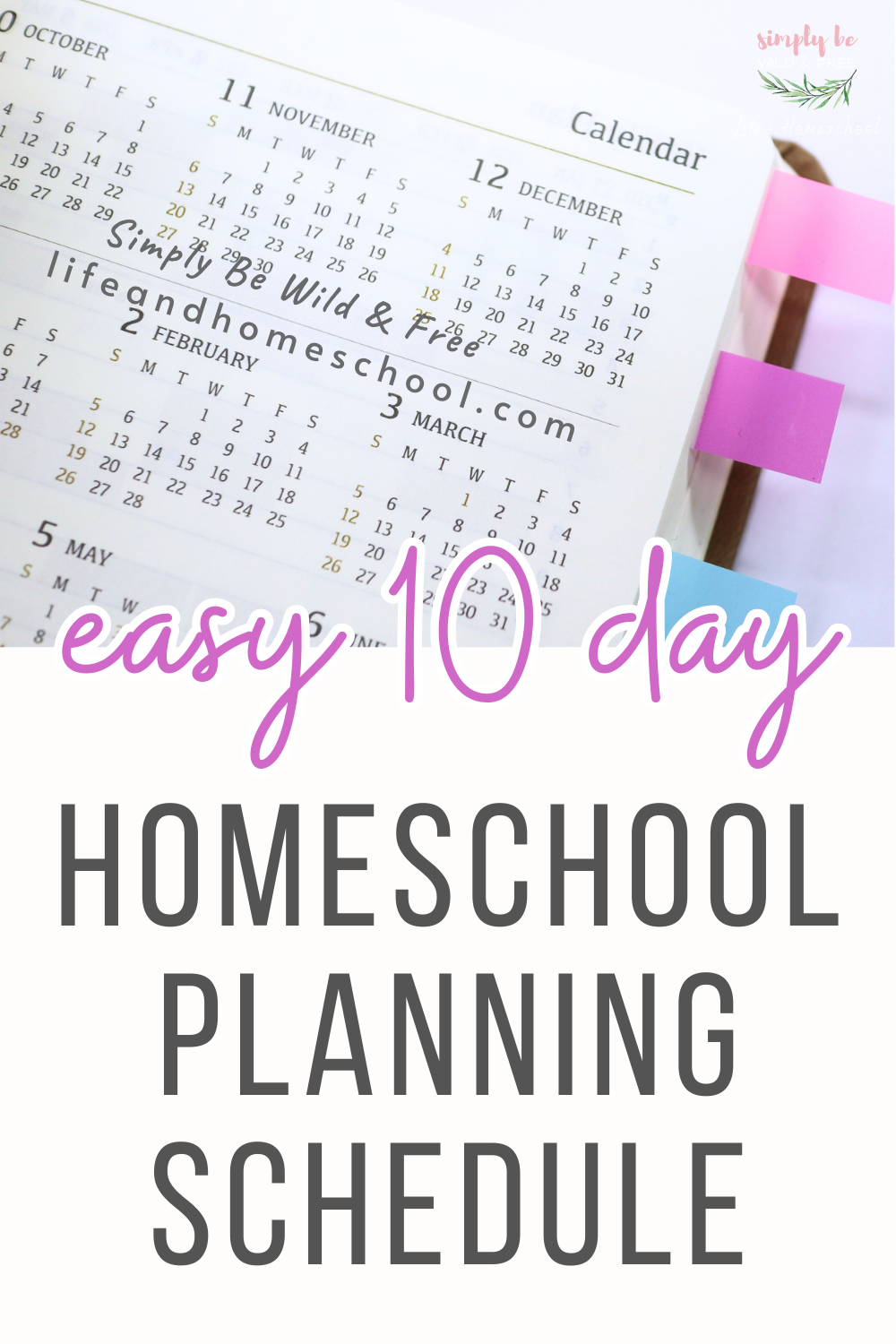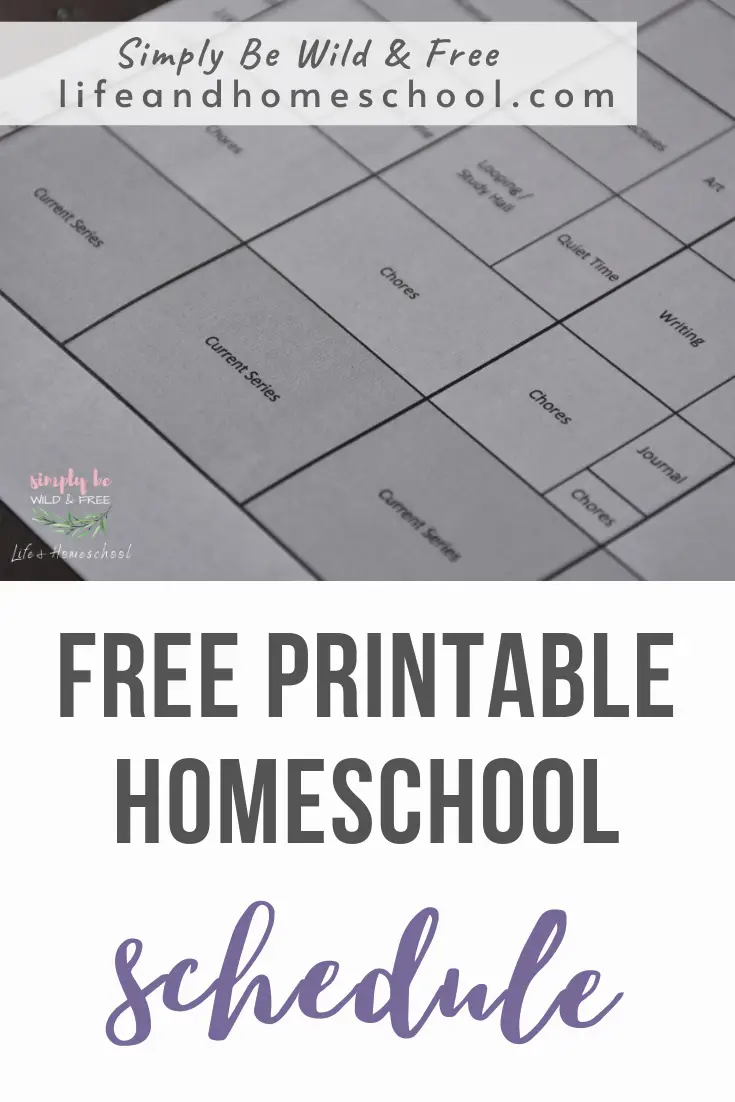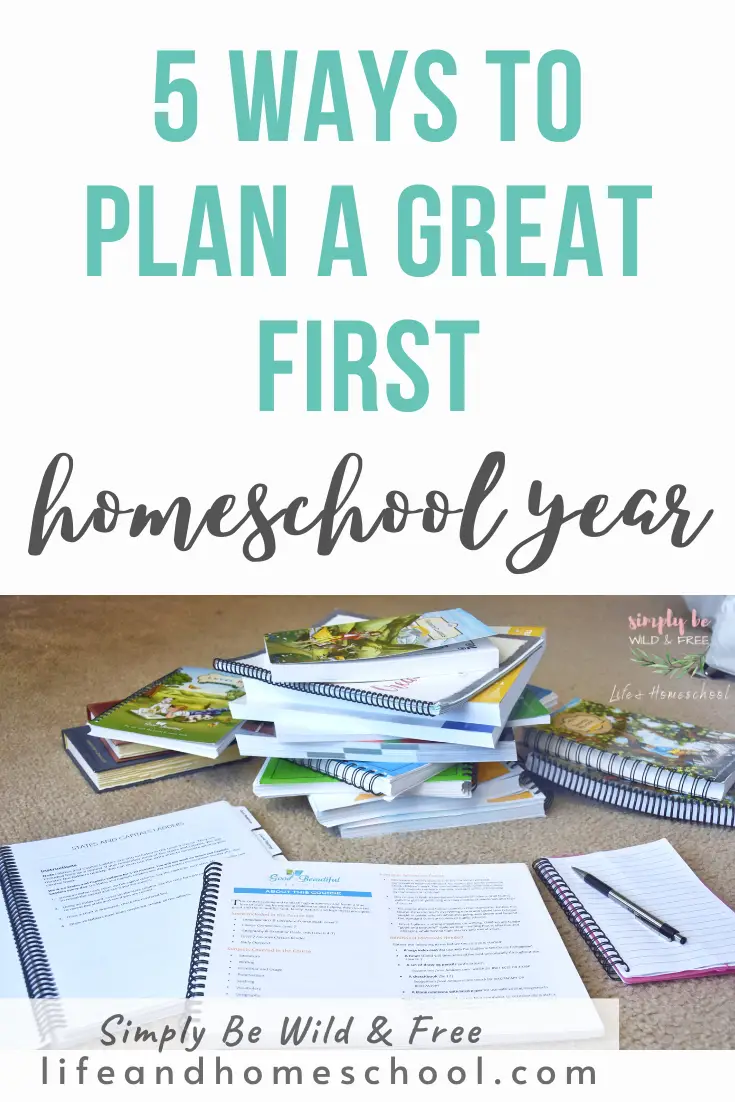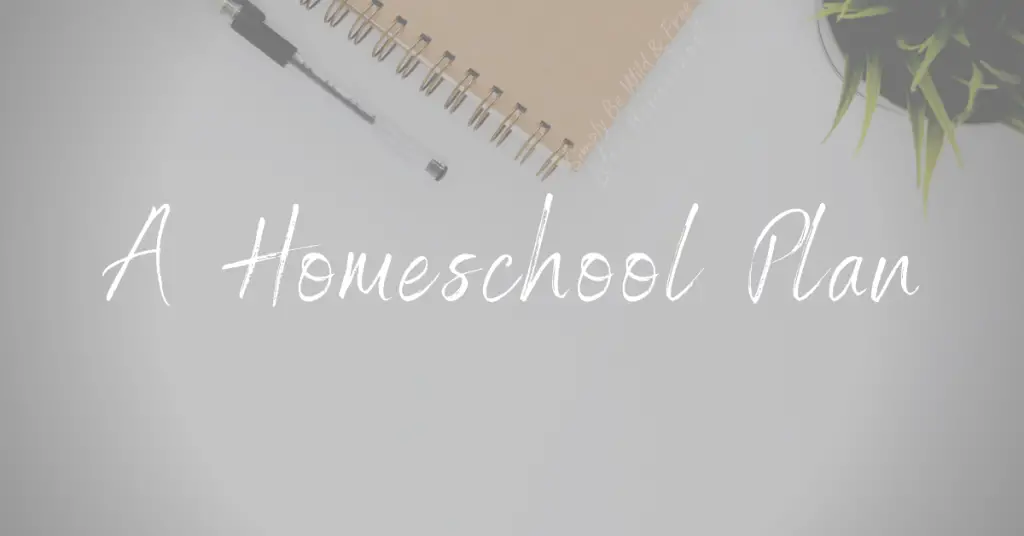
Kick your homeschool planning off to a great start with these simple tips for planning your homeschool year over the summer!
Preparing to Homeschool
Gearing up for your first homeschool year can feel completely overwhelming.
From curriculum options to homeschool schedules, and everything in between!
Even as a veteran homeschool mom it can feel daunting when we start a new curriculum or decide to mix up our schedule.
That’s why I like to utilize the summer months for all of my homeschool prep.

Using the summer months to research curriculum, draft out a doable homeschool schedule, and create simple pacing guides is a great first step to having a smooth first homeschool year.
Homeschool Planning Over the Summer
While I’m not much of a summer fan, I do look forward to it for a few reasons every single year.
Believe it or not, summertime can actually be a pretty magical time for homeschool moms.
Personally, I enjoy the time off from our normal 3-day homeschool week.
Plus, I absolutely love utilizing my summer to be both productive and still.
If you like the idea of knocking out all your homeschool planning over the summer months, this one is for you!
This is the simple process I use when planning our homeschool year over the summer.
-
Take Time Off
If this isn’t your first time at the rodeo and homeschooling has been a norm in your home for some time, this step is 100% essential!
Taking some time off from homeschooling will allow you to rest up and practice a little self-care before gearing up for what feels like another never-ending race.

As a work-from-home, homeschool mom of 3, my first goal every summer is to take 2-4 weeks completely off from everything.
We tend to finish up our old curriculum in mid-May, followed up with starting our new curriculum in mid-June.
Some kids finish old work before others, sometimes we all finish early, and sometimes someone finishes late.
Life isn’t perfect, so I try to allow myself a little flexibility with that 2-4 weeks off time frame.
If this is your first homeschool year, however, feel free to take a little less time off than we do.
Extra time hitting the books with your kids over the summer months can actually be extremely beneficial when starting your very first homeschool year!
-
Plan Start & End Dates
During your time off, simply take a day or 2 to plan out the tentative start & end dates for your upcoming homeschool school year.
This doesn’t have to take a lot of time and it’s best to do this after you’ve at least taken a few days to a week off from all the things.

With that said, knocking this task off early on is a great way to start the homeschool planning process.
*PRO Tip: Don’t stress, as these dates are simply to serve as a brought estimate.
If narrowing it down to one set of dates is too much of a challenge, simply pick multiple start and end date possibilities for your homeschool!
-
Create A Schedule
Once the start and end dates have been picked, it’s time to figure out your new homeschool schedule!
This task can be tackled at any time throughout the summer.
First, look over the time that is in between your planned start date and end date.
Do you already have a solid 40 weeks built in like most traditional schools do or do you have something totally different lined up?
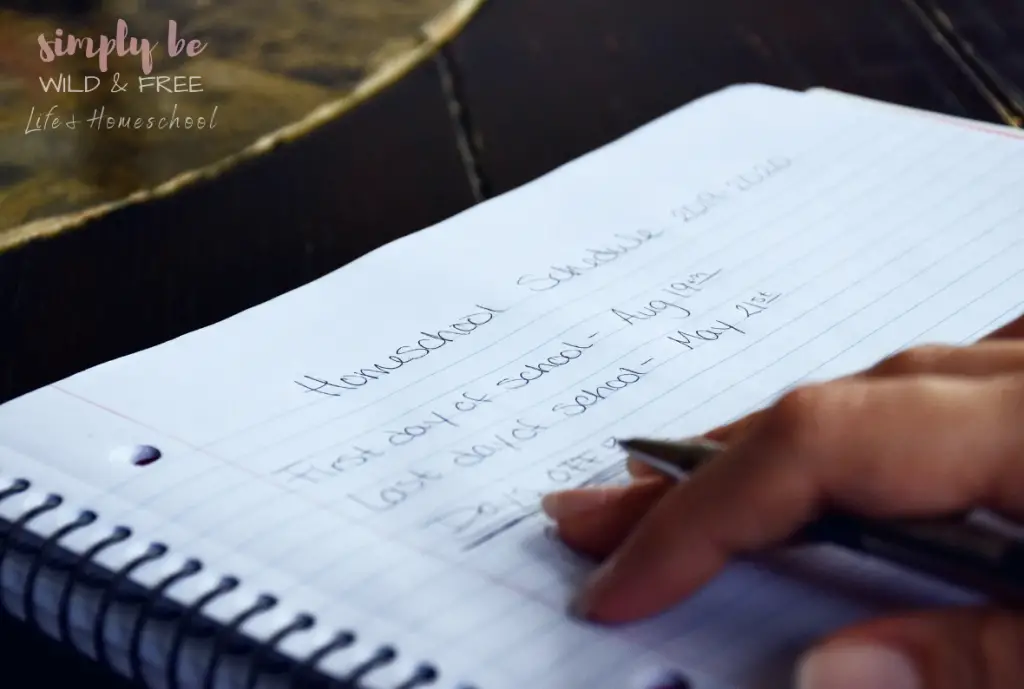
Next, take those school weeks and plan your tentative days off.
Want to take an entire month off around the holidays? Write it down!
Love the idea of no school on Mondays or birthdays? Jot that down as well!
Just remember, this is all a rough draft of dates to get you started, finalizing your schedule will come later.
Finally, look over your children’s curriculum and figure out just how many lessons they have per subject.
For example, if Child A has 100 math lessons and you are already planning a traditional 180 school days per year, they will not need to complete a math lesson every single school day. HUGE WIN!
However, if Child B had 150 math lessons to complete and you are only planning a 120-day school year, you will have to find a solution that allows those extra 30 lessons to be completed. Stress-free, if possible!
-
Finalize Your Schedule
Once you have looked over all subjects, it’s time to finalize your plan and create a fully functioning homeschool schedule!
First, start marking down finalized no school days. These are the ones you just have to have built-in.
In our home, we always take off birthdays, holidays, and Fridays.
Then, we take off the entire month of December — making up some of that time during other traditional school breaks (such as spring break).
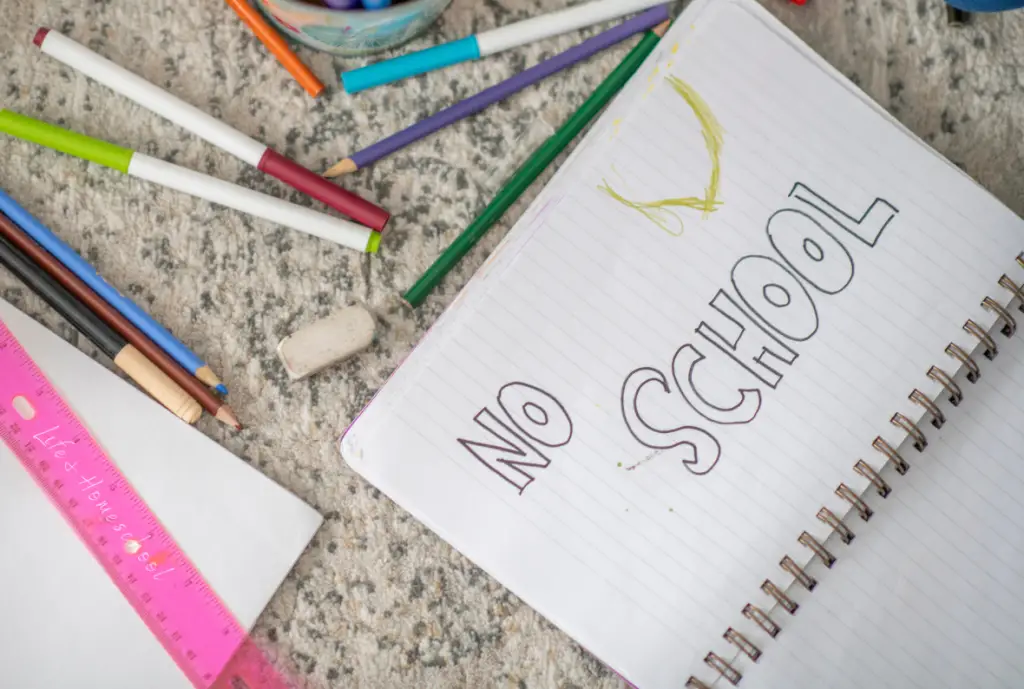
Next, re-assess your children’s lessons.
Will they still fit in during the time you originally jotted down or do you need to tweak some things?
Finally, if there are days left over plan field trips, additional free-range days off, or special activities!
Every homeschool schedule looks slightly different and that is the true beauty of homeschooling.
In our home we have a 36-week school year, only homeschooling core subjects 3 days a week.
Somehow we lucked out and all the kid’s birthdays fell on days off making our running total of school days 107 this coming year!
Homeschool Planning Guide
Once the schedule is finalized it’s time to begin the homeschool lesson planning process.
We utilize a homeschool file folder system in our home and that is the method I’m going to touch on here.
First, I break all my homeschool planning up by subject, not by grade.
This simply means I prepped 9th-grade, 7th-grade, and 1st-grade science lessons all on the same day, and so on.
With that said, this is simply the method that works best for me.
If you are planning for more than 3 children, breaking it up by child may work best.
Next, I set small goals for myself each day to avoid being overwhelmed!
If I tried to tackle every subject in a single afternoon, I would probably end up grouchy or curled up in a ball crying.
Homeschool Planning Guide Breakdown
Below is a sample of how I prepped all of our homeschool lessons this summer in only 10 days!
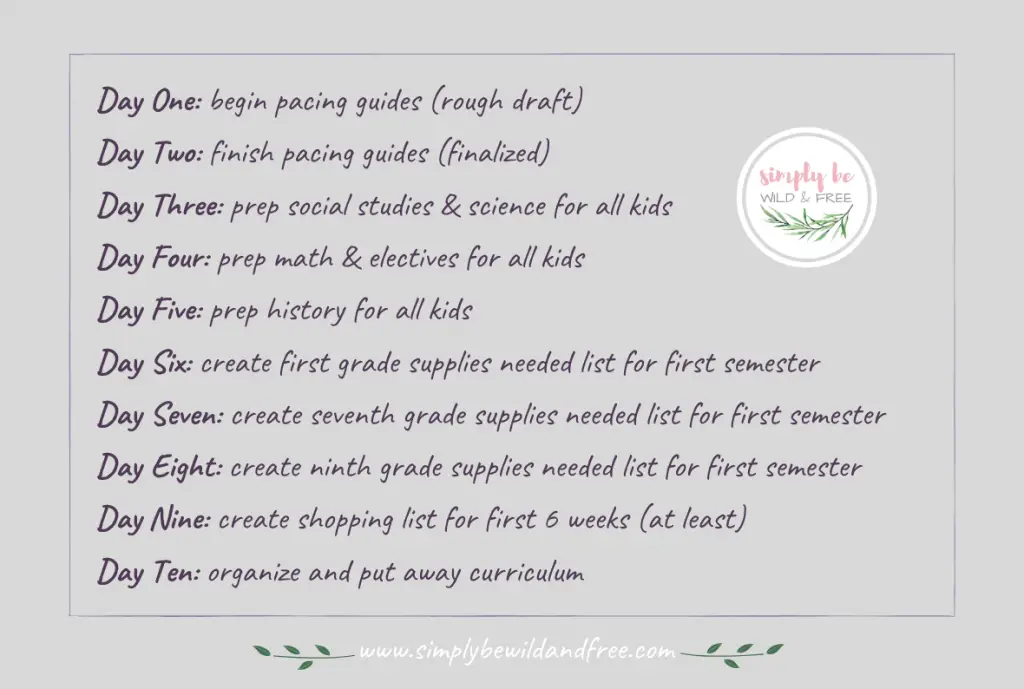
Something to keep in mind while viewing this 10-day schedule — at the time I used this, these were the only subjects we used in non-workbook form. Yes, we still did language arts, geography, and handwriting.
*Note: If you have more than 3 kids, you may need to adjust the time period you allow yourself to get these tasks completed. Simply extend it by 5 or even 10 days if needed! Go easy on yourself momma, some things just take a little extra time.
*PRO tip: If setting aside 10 days in a row seems like a complete chore, simply extend it by a few days, adding in some days off to reset when needed!
When prepping our homeschool subjects I simply print things that need to be printed, tear out worksheet pages, and so on!
All assignments and lose papers then go into our curriculum folder system that houses a weekly folder for each child.
This is definitely the most time-consuming part of the homeschool planning process so be patient and give yourself grace.
Final Homeschool Planning Tips
Once you’ve created the schedule and prepped the lessons, it’s time to focus on simple summer learning!
Not only will this keep your kiddos busy during the summer months, but it will help you have a much smoother start to the homeschool year.
-
Start Lessons Early
Whether you’re planning a long school year or a short one (like us), starting lessons earlier than your start date is always, always a good idea.
Because we only homeschool 3 days a week from Aug-May, we have to start easing into our curriculum well before August rolls around!
For us, this means averaging around 1 lesson, per subject, per week during the summer months.
So basically, a full day’s worth of school work each week, for each child over the course of the summer.
Not too shabby and totally doable!
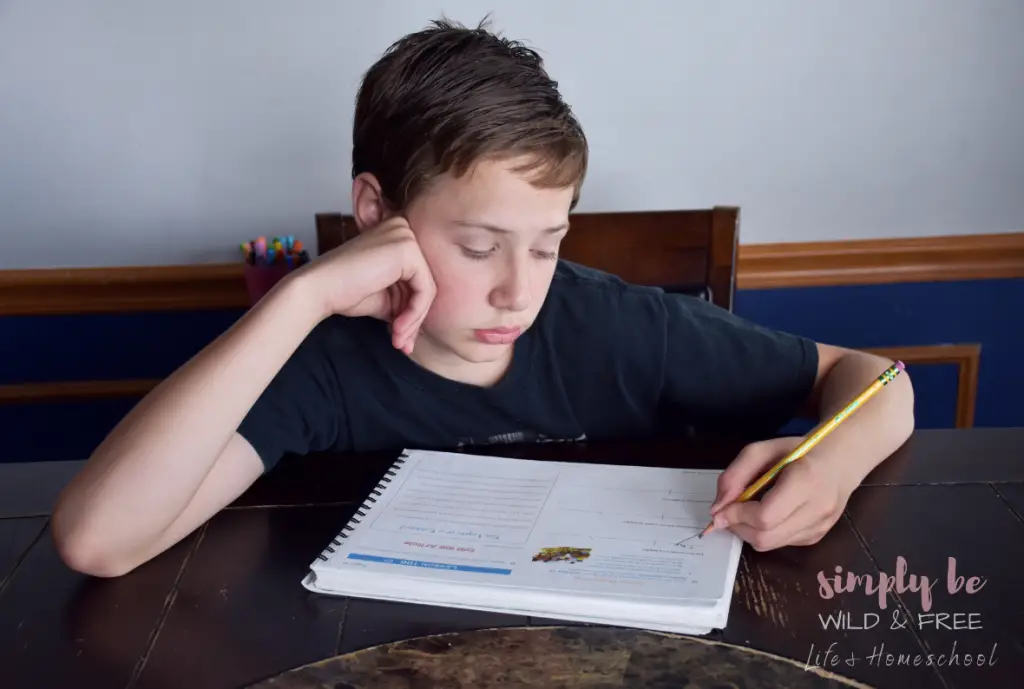
I actually really like this method.
Not only does it help encourage my kids to stick with the cycle of responsibility and keep them in a learning mode throughout the summer months, but it gives us a great jump start on the upcoming school year!
It’s almost like schooling year-round, you guys — but my kids totally don’t feel like it is, so I consider that a huge win!
With that said, this is simply my preferred method.
If getting a jump start on new curriculum isn’t your idea of summer fun, lean on simple summer worksheets instead.
-
Plan Fun Extras
While fun summer activities and seasonal summer craft ideas are great for summertime, planning fun extras for your homeschool year is important as well!
Not going to lie though, sometimes I get a little in over my head when it comes to extras in our homeschool.
I have a slight curriculum and sometimes purchase so many extras, that I don’t always know how to squeeze them in.
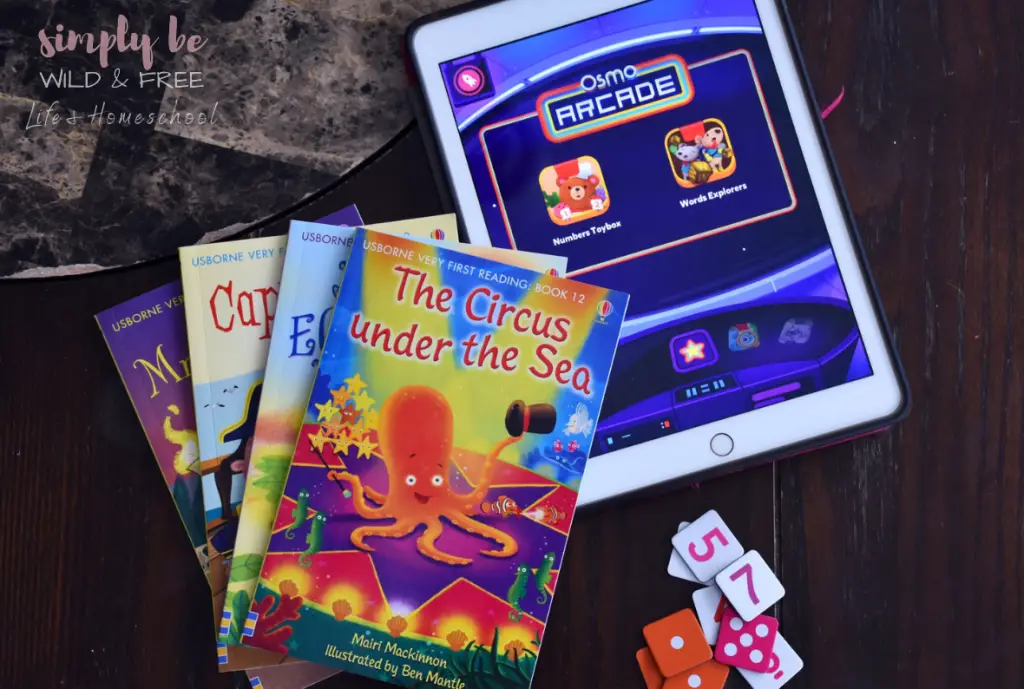
With that said, these things are not as essential as core lessons so I don’t fret too much if we don’t end up getting to them
If you have some extra wiggle room in your homeschool schedule, simple extras will be a great way to fill in the gaps!
You can easily create a looping schedule for extras or utilize a simple quiet time routine — we do both.
Either way, extras are always fun to lean on, but definitely not necessary!
Other Homeschool Planning Tips
If you are in the midst of homeschool planning, it’s important to remember these 3 things!
- Be patient with yourself, this is hard stuff!
- Take all the time you need to prep & plan.
- Change your mind, then change it again.
There is no right or wrong length of time for planning, no exact schedule that works for everyone, and no perfect solution for every homeschool.
Happy planning!
Love this article? Pin it or share it on social media today!
